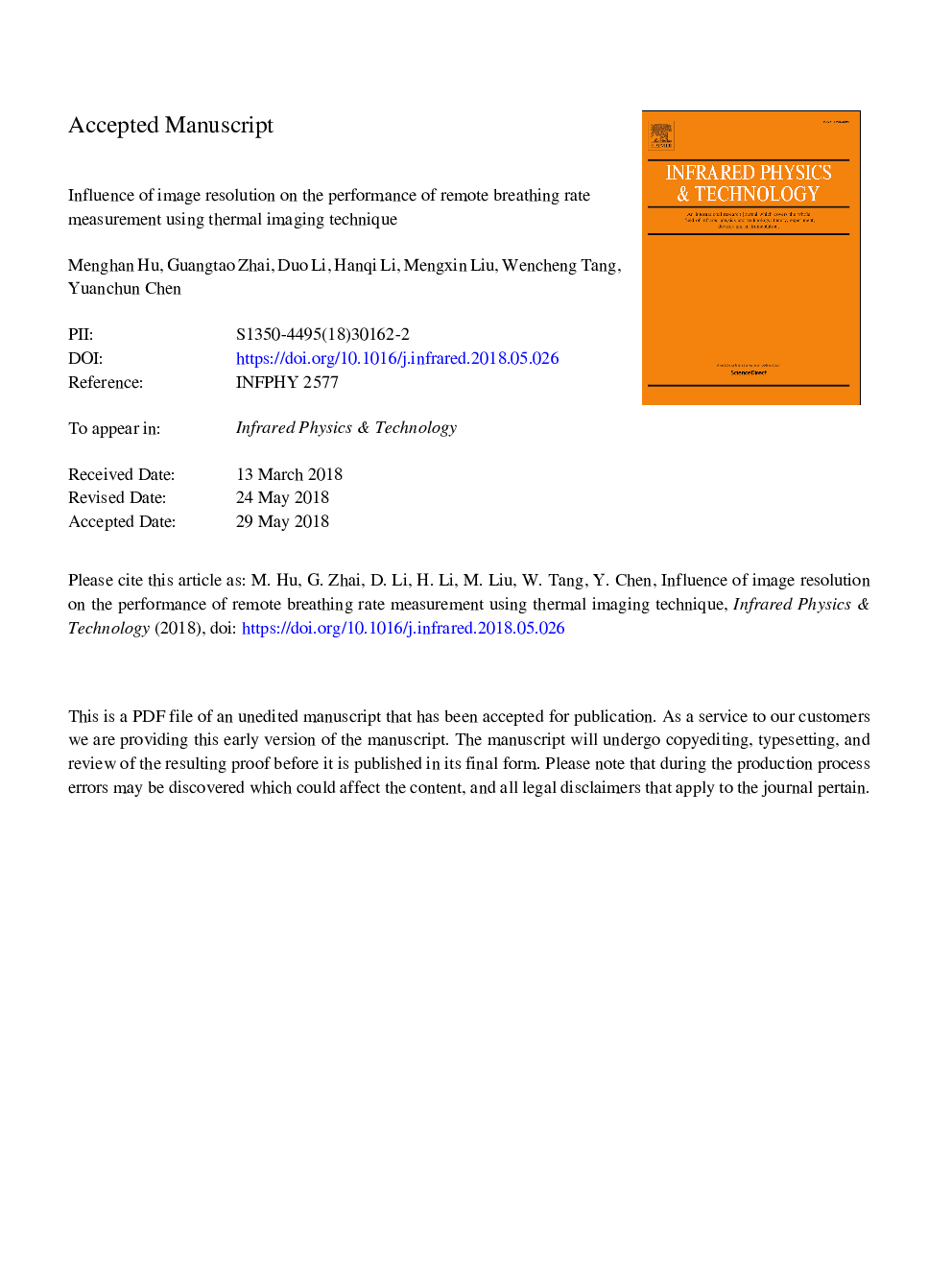| Article ID | Journal | Published Year | Pages | File Type |
|---|---|---|---|---|
| 8145449 | Infrared Physics & Technology | 2018 | 29 Pages |
Abstract
The aim of this work was to evaluate the influence of a thermal image resolution on the performance of thermal imaging system for remote and unobtrusive breathing rate (BR) measurement. The thermal imager with original resolution of 640â¯Ãâ¯480 was first used to establish the thermal imaging system. The thermal video database containing 60 videos was developed to validate the feasibility of this system for BR measurement. Subsequently, the nearest-neighbor interpolation was exerted to create the thermal videos with low resolutions. The Bland-Altman plots of BR showed that distances between the upper and lower 95% limits of agreements were 4.094â¯bpm, 10.595â¯bpm, 10.091â¯bpm, 15.168â¯bpm and 20.769â¯bpm for video resolutions of 640â¯Ãâ¯480, 512â¯Ãâ¯384, 320â¯Ãâ¯240, 192â¯Ãâ¯144 and 64â¯Ãâ¯48, respectively. With respect to linear regression analysis, the determination coefficient (R2) of 0.898, 0.890, 0.900, 0.776 and 0.539 had been found for the resolutions of 640â¯Ãâ¯480, 512â¯Ãâ¯384, 320â¯Ãâ¯240, 192â¯Ãâ¯144 and 64â¯Ãâ¯48, respectively. These two statistical approaches both demonstrated that the thermal resolution of 320â¯Ãâ¯240 achieved the performance comparable to the high thermal resolution. Inspired by the above results, for the practical applications, we can choose the appropriate resolution by taking both the system performance and cost into account. In this case, the thermal video resolution of 320â¯Ãâ¯240 could be selected for BR measurement in some application scenarios (i.e. lie detection) where the measurement distance is approximately 1.5â¯m. This research may greatly improve the design of the contactless measurement device for physiological signals.
Keywords
Related Topics
Physical Sciences and Engineering
Physics and Astronomy
Atomic and Molecular Physics, and Optics
Authors
Menghan Hu, Guangtao Zhai, Duo Li, Hanqi Li, Mengxin Liu, Wencheng Tang, Yuanchun Chen,
